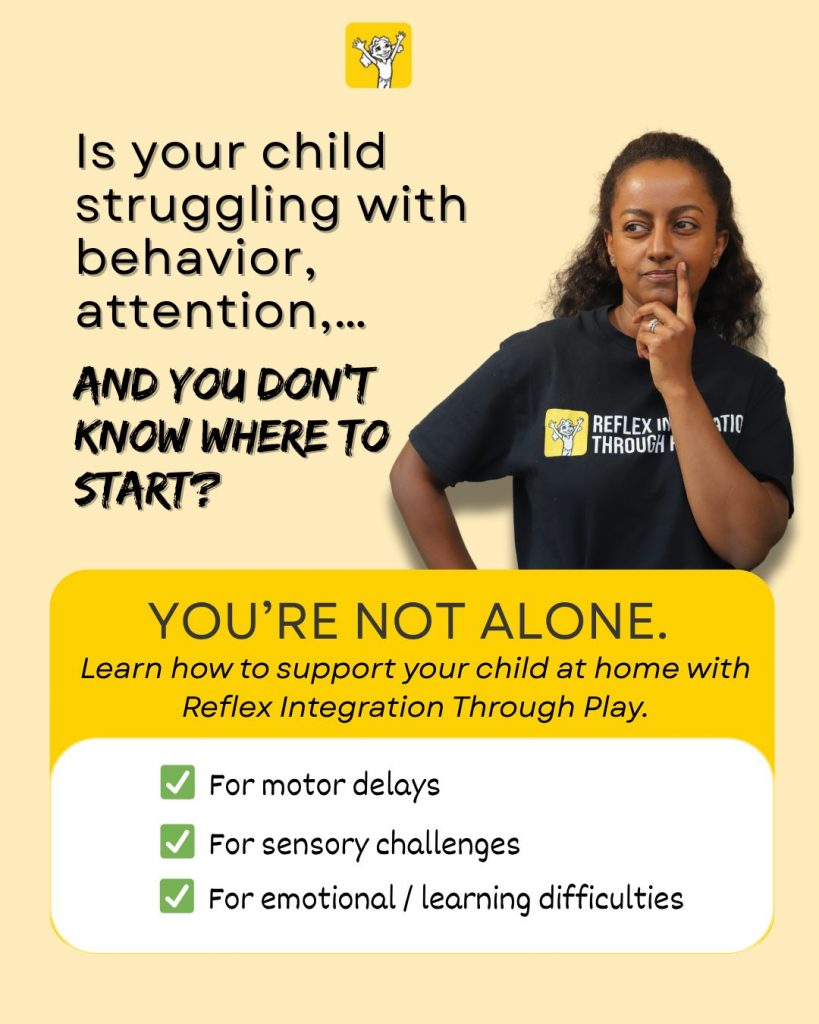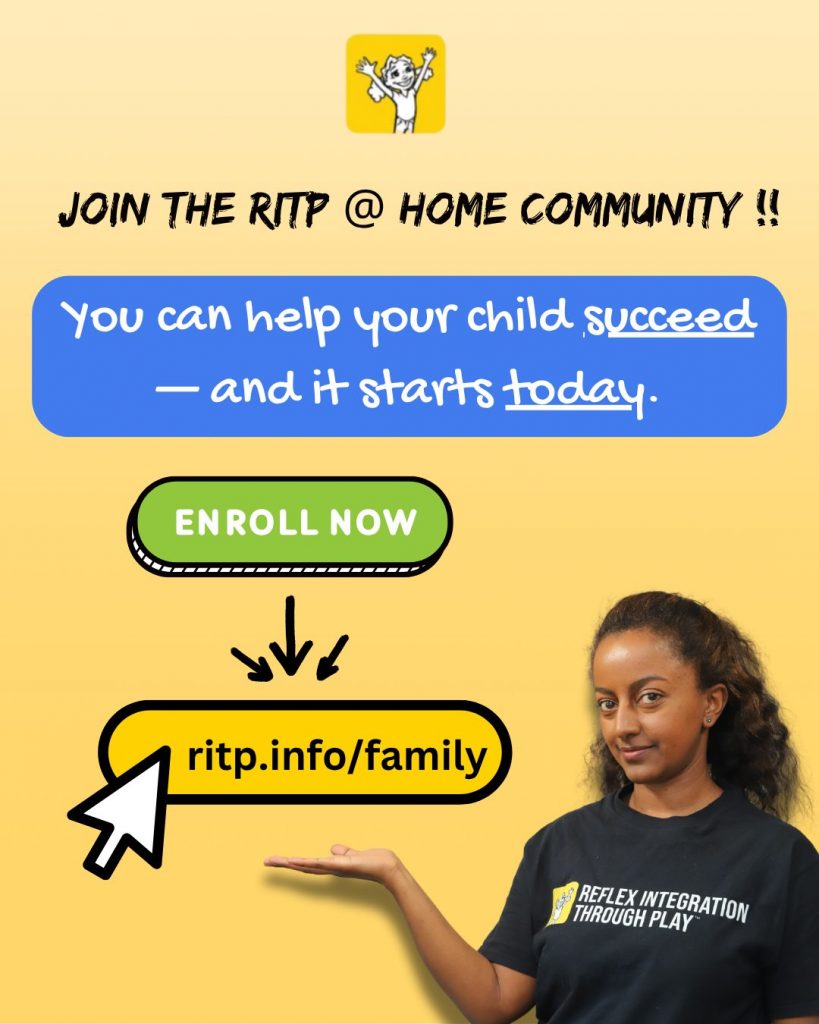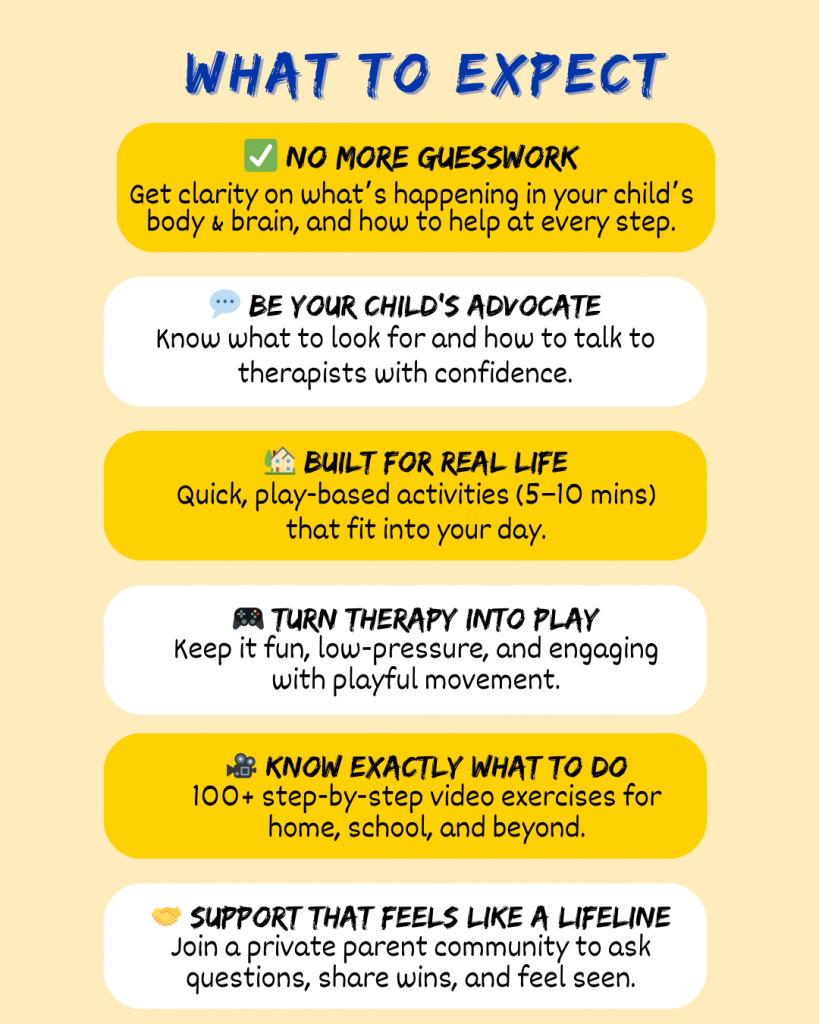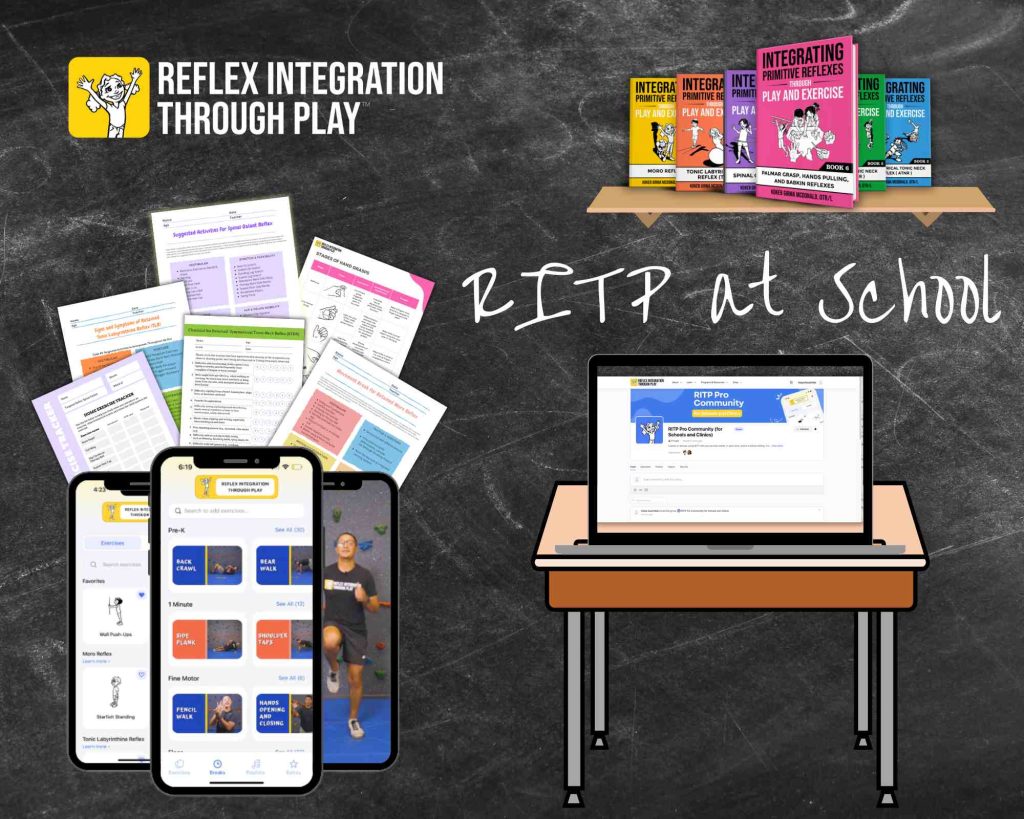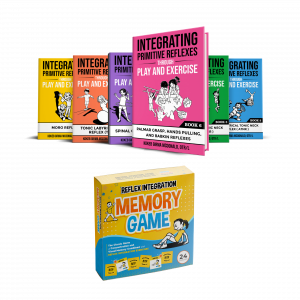This is Part 2 of the Creating an At-Home Program series. Please refer to Part 1 in episode 39 of the RITP podcast if you have not had a chance to review.
As pediatric therapists, we’ve all experienced that moment when a parent arrives at their first session overwhelmed, armed with a list of exercises they found online, desperate to help their child but unsure where to start. Perhaps you’re that parent reading this, feeling the frustration right now. You want to support your child’s development at home, but the sheer volume of information available makes simply starting too overwhelming.
The truth that gets lost in the noise is that before jumping into whichever activities have the best reviews or look the easiest, it’s imperative to understand a child’s unique developmental picture. It’s much easier, and more effective, to build a program around a child’s specific needs than to mold a child to a specific program.
Observation Creates Tailored Reflex Integration
It’s tempting to jump straight into action when we see our child struggling. It’s normal to want to help. We see a promising reflex integration activity online or a sensory strategy that worked for another child, and we think, “Let’s try this!” but without understanding the specific challenges your child faces, we’re essentially throwing darts in the dark.
Think of it this way: you wouldn’t prescribe yourself medication without first understanding your symptoms and getting a proper diagnosis, right? The same principle applies to developmental support. Observation isn’t a delay in treatment. It’s the foundation that makes every intervention that follows effective.
Four Pillars of Developmental Milestones
We discussed the Four Pillars of developmental observation in Step 1 of the Creating an At-Home Program series, so please refer to episode 39 for more details. To quickly review, when assessing a child’s developmental profile, focus on these key areas:
Gross Motor Skills: foundations of movement. These observations can reveal retained reflexes like the Asymmetrical Tonic Neck Reflex (ATNR) or Spinal Galant that may be impacting their motor planning.
Fine Motor Skills: hand strength, precision, and control. Difficulties here might connect to retained reflexes affecting shoulder stability or hand-eye coordination, but they could also indicate other developmental needs entirely.
Visual Skills: more than just 20/20 vision. Visual processing challenges often intertwine with reflex retention but require their own specific assessment.
Cognitive Skills & Social Skills: attention, memory, problem-solving, and executive function; this is often where the emotional impact of developmental challenges becomes most visible.
“Struggling” vs “Struggling With Sensory Processing”
We have a tendency to fear what we don’t understand, and this applies directly to a child’s developmental delays. Once observation begins, it opens the door to an all-encompassing understanding of why a child is experiencing difficulties that others aren’t.
Observation moves parents and educators from “My child is struggling” to “My child has difficulty with activities that require crossing midline and tracking moving objects, which impacts their ability to catch a ball and participate in group games.”
The specificity here transforms everything. It allows therapists to target interventions precisely, and it helps parents understand that their child isn’t “behind.” They just have specific areas that need support. It also creates a shared language between parents and professionals that makes collaboration positive and productive over negative and cynical.
Document Retained Reflexes When Observed
For parents, start keeping notes about what you notice during everyday activities. When does your child seem most coordinated? When do they struggle? Taking video can be incredibly valuable in this stage. They allow you to capture moments you can review later and share with your occupational therapist or physical therapist without relying on memory or subjective descriptions.
For therapists, remember that parents are observing their children in contexts we never see. A 30-minute session in our clinic doesn’t show us how a child navigates a crowded playground or sits through a family dinner. Empowering parents to be skilled observers multiplies our assessment power exponentially.
Developmental Milestones vs Chronological Milestones
One crucial element of effective observation is matching expectations to your child’s actual developmental stage, not their chronological age. A child who’s developmentally functioning at a 4-year-old level but is chronologically 6 needs activities and expectations aligned with where they are, not where we wish they were.
This realistic approach isn’t about lowering standards. It’s about building a secure foundation. To simplify: you can’t construct the second floor of a house if the first floor isn’t stable. Retained reflexes often indicate that certain developmental foundations weren’t fully established, and our job is to go back and create that stability before moving forward.
Moving From Assessing to Integrating Primitive Reflexes
Once you have a clear observational picture, then you can work with your therapy team to identify which retained reflexes might be impacting development. Thorough observation creates the framework for a targeted, play-based program that actually addresses your child’s specific needs.
Only after observation can reflex integration through play become powerful. It’s not a generic, one-size-fits-all program. It’s a responsive approach built on deep understanding of an individual child.
Overwhelmed? Observe Before Starting Reflex Integration Therapy
If you’re a parent feeling overwhelmed, take a breath, put the phone down, and pick up a pen and paper. First, become a skilled observer of your child. Then, partner with a qualified physical or occupational therapist for children who can help you interpret what you’re seeing.
For therapists, consider how empowering it is for the families you work with to observe and document between sessions. Are you giving them specific things to look for? Teaching them the “why” behind what you’re noticing?
The shift from frustration to clarity doesn’t come from doing more. It comes from understanding better, and that understanding begins with observation.
✨ Try the RITP App for a free 3-day trial.
📚 Learn more and explore resources at ritp.info/shop
🎧 Listen to episode 40 now to explore how to understand your child’s unique developmental challenges before starting any at-home reflex integration therapy program.
Episode Breakdown:
00:00 Introduction: Social Skills and Movement Patterns
00:26 Welcome to Reflex Integrations through Play
00:49 Understanding Your Child’s Developmental Challenges
01:25 Collaborating with Specialists
02:23 Key Areas to Observe in Your Child
04:43 The Importance of Observation
06:03 Connecting Observations to Reflex Patterns
08:34 Becoming Your Child’s Advocate
10:06 Conclusion and Next Steps
And don’t forget to check out the RITP App for step-by-step guidance and progress tracking.
Parents: Are you tired of daily struggles with focus and attention, homework meltdowns, or motor delays?
The RITP Family Bundle helps kids move better, focus longer, and feel calmer — all through simple, play-based exercises that fit into real life.

